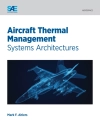This project was initiated in response to the establishment of mercury TMDLs around the country and issues raised by this process, specifically concerning the issue of mercury bioavailability. While many of these studies recognize that point sources constitute a small fraction of the mercury load to a water body, a question has been raised concerning the relative bioavailability of mercury coming from various sources. For instance, is the mercury discharged from a wastewater treatment plant more or less bioavailable than mercury in precipitation, mercury in urban stormwater, or mercury in sediments? This project seeks to address this question by developing a reliable definition and approach to estimating bioavailability, by profiling various sources of mercury in a watershed with regard to the species of mercury present and by profiling those factors or conditions in either the effluent or the receiving water that enhance or mitigate the bioavailability of those forms. There were several important objectives relevant to the estimation of bioavailability and potential bioaccumulation of mercury from wastewater treatment plants and other sources in receiving waters. The first was to develop a working definition of bioavailability. For purposes of this project, this definition includes not only methylmercury, the form of mercury that readily bioaccumulates in aquatic food chains, but also bioavailable and potentially bioavailable inorganic mercury species that can be converted to methylmercury within a reasonable time frame. It is concluded that the strength of binding to solids and mercury-sulfur-organic matter associations are major factors in determining the bioavailability of inorganic Hg.A second major objective was to identify those factors or conditions in both the effluent and the receiving waters that enhance or mitigate the transformation of inorganic mercury to methylmercury and its subsequent bioaccumulation. Profiles were developed for various sources of mercury in watersheds, including wastewater treatment plants, with regard to bioavailable and potentially bioavailable mercury, and key factors in effluents and receiving waters that enhance or mitigate it. A procedure to assess the relative bioavailability of mercury from various watershed sources, including wastewater treatment plants was developed and tested using data from a US location. The project also features a literature review of conventional and emerging technologies for the removal of mercury from effluent streams and their effects on mercury bioavailability. A review of the salient aspects of mercury TMDLs completed by EPA and the states is also included. This project concludes that, based on available data and bioavailability as defined in this report, wastewater effluent is one of the lowest among the sources evaluated with respect to mercury bioavailability, along with urban runoff and mining runoff. Atmospheric deposition and contaminated sediments tend to be among the highest sources with respect to mercury bioavailability.
J. David Dean & Robert Mason
Estimation of Mercury Bioaccumulation Potential from Wastewater Treatment Plants in Receiving Waters: Phase 1 [PDF ebook]
Estimation of Mercury Bioaccumulation Potential from Wastewater Treatment Plants in Receiving Waters: Phase 1 [PDF ebook]
ซื้อ eBook เล่มนี้และรับฟรีอีก 1 เล่ม!
ภาษา อังกฤษ ● รูป PDF ● ISBN 9781780403601 ● สำนักพิมพ์ IWA Publishing ● การตีพิมพ์ 2009 ● ที่สามารถดาวน์โหลดได้ 6 ครั้ง ● เงินตรา EUR ● ID 2998436 ● ป้องกันการคัดลอก Adobe DRM
ต้องใช้เครื่องอ่านหนังสืออิเล็กทรอนิกส์ที่มีความสามารถ DRM












